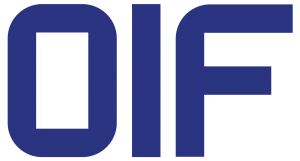OIF Unveils OFC Interoperability Demo Plans
The Optical Internetworking Forum (OIF) today released the slate of public demonstrations that it will conduct at OFC in Anaheim, March 22-24, 2016. The demo will showcase multi-vendor interoperability of two key technologies; Pluggable Coherent Optics and 56G Electrical Interfaces. These technologies will cover a range of channel reaches from Very Short Reach (VSR) to Long Reach (LR) and includes using both NRZ and PAM4 modulation formats. Live CFP2-ACO pluggable coherent optics, based on the recently announced OIF implementation agreement, and attendant test equipment are also part of the display. The demonstrations will be conducted in the OIF Booth #3619. In addition to the live demonstration, OIF industry experts will conduct two panel discussions at OFC on Tuesday, March 22.
“The OIF will be extremely busy at OFC this year,” said Steve Sekel of Keysight Technologies and the OIF Physical & Link Layer Interoperability Working Group Chair. “This is a very ambitious interoperability demo and we have a large slate of thought leaders speaking during the conference. In addition, the OIF’s industry leadership at OFC will conduct a public workshop on 100G Serial Electrical Links.”
The technologies on display during the live interoperability demonstration include CFP2-ACO Optical Modules, Coherent DSPs and Compliance Boards. Also included will be CEI-56G silicon for PAM4 and NRZ demonstrated in VSR NRZ and PAM4 channels, medium reach NRZ and PAM4 cable channels and a long reach PAM4 backplane channel. Participating companies include Amphenol, Anritsu, ClariPhy, Credo, Fujitsu Optical Components, Inphi, Keysight Technologies, Molex, MultiLane, TE Connectivity, Tektronix and Yamaichi Electronics.
OIF Panel Discussions at OFC
CEI-56G – Signal Integrity to the Forefront
Tuesday, March 22, 2016 – 10:30am-11:30am – Expo Theater II (Hall B)
Moderator: Nathan Tracy, TE Connectivity, OIF Technical Committee Chair
Panelists: Tom Palkert, Molex and OIF Physical & Link Layer Working Group Vice Chair – Electrical; Steve Sekel, Keysight Technologies, OIF Physical & Link Layer Interoperability Working Group Chair; Dave Stauffer, Kandou Bus, OIF Physical & Link Layer Working Group Chair
Transport SDN – Getting Down to Business
Tuesday, March 22, 2016 – 2:45pm-3:45pm – Expo Theater III, (Hall A)
Moderator: Dave Brown, Nokia, OIF Vice President – Marketing
Panelists: Lyndon Ong, Ciena, OIF MA&E Committee Co-Chair – Networking; Jonathan Sadler, Coriant, OIF Technical Committee Vice Chair; Vishnu Shukla, Verizon, OIF Carrier Working Group Chair
OIF Workshop on 100G Serial Electrical Links
The OIF will host a public workshop addressing the latest developments in 100G Serial, immediately following OFC 2016 in Anaheim, California. The event, OIF Workshop – 100G Serial Electrical Links and Beyond, is open to the public and scheduled for Thursday, March 24, 2016, from 12:30 pm to 6:15 pm at the Anaheim Marriott Hotel. The workshop will feature subject matter experts from the OIF and will include an industry view presented by Dale Murray, Principal Analyst at LightCounting Market Research.
Registration fee includes a one-hour cocktail reception. For details including registration information, please click HERE.
OIF PLL Interoperability Demo 2016
OIF member companies will demonstrate multi-vendor interoperability of Pluggable Coherent Optics and 56G Electrical Interfaces in live, operating environments. The OIF’s Physical and Link Layer Working Group demonstrations include live 56G electrical interface interoperability over a range of channel reaches from VSR to LR and a range of modulations including NRZ and PAM4. The expanding ecosystem will be showcased through live demos. 56G and coherent optics test equipment will also be demonstrated. Public demonstrations will be on display March 22-24, 2016 at OFC in Anaheim, CA in OIF Booth #3619. Additional information can be found at http://www.oiforum.com/meetings-and-events/oif-ofc-2016/
About the OIF
The OIF facilitates the development and deployment of interoperable networking solutions and services. Members collaborate to drive Implementation Agreements (IAs) and interoperability demonstrations to accelerate and maximize market adoption of advanced internetworking technologies. OIF work applies to optical and electrical interconnects, optical component and network processing technologies, and to network control and operations including software defined networks and network function virtualization. The OIF actively supports and extends the work of national and international standards bodies. Launched in 1998, the OIF is the only industry group uniting representatives from across the spectrum of networking, including many of the world’s leading service providers, system vendors, component manufacturers, software and testing vendors. Information on the OIF can be found at http://www.oiforum.com.

 “The most important thing for everyone is power consumption on the line card”
“The most important thing for everyone is power consumption on the line card”